An Aerodynamic Correction Technique for the Unsteady Subsonic Wing–Body Interference Model
Abstract
:1. Introduction
2. Materials and Methods
2.1. Unsteady Linear Aerodynamics for Wing–Body Interference Model
2.2. A Correction Method for Wing–Body Interference Model to Correct Unsteady [AIC] matrix
- The reduced frequency k is small; therefore, the real part of the unsteady downwashes , unsteady [AIC] matrix, and integration matrix [SKJ] will be close to k = 0;
- Fortunately, when the reduced frequency k is small, the imaginary part of the uncorrected aerodynamic force for body elements is small, and close to the target aerodynamic force.
- The real part of the wing–body interference model and the imaginary part of the lifting surface can be corrected by using the diagonal correction method, while the imaginary part of the body elements can be left uncorrected;
- A unified correction matrix is required to simultaneously correct the real and imaginary parts for all elements in the wing–body interference model.
2.3. A Correction Method for Wing–Body Interference Model to Correct Unsteady Force and Moment
2.4. Simulation Model
- Pitch motion is a very typical flight motion;
- The wing is close to the reference point, while the tail is far away from it. The different sections of the fuselage range differently to the reference point. The varying distances result in the downwashes of the real and imaginary parts occupying different proportions in different components during pitch motion.
3. Results
3.1. Pressure Difference Distribution Comparison at 1 HZ
3.2. Pressure Difference Distribution Comparison at 5 HZ
3.3. Pressure Difference Distribution Comparison at 10 HZ
3.4. Pressure Difference Distribution Comparison at 20 HZ
4. Discussion
5. Conclusions
Author Contributions
Funding
Data Availability Statement
Conflicts of Interest
References
- Robert, C.S.; John, J.C.; Maxwell, B. Dynamic Modeling Uncertainty Affecting Control System Design. AIAA Paper, No. 84-1057. In Proceedings of the 25th Structures, Structural Dynamics and Materials Conference, Palm Springs, CA, USA, 14–16 May 1984. [Google Scholar]
- Martin, R.W.; David, K.S. Flight Dynamics of Aeroelastic Vehicles. J. Aircr. 1988, 25, 563–571. [Google Scholar]
- Saltari, F.; Riso, C.; Matteis, G.D.; Mastroddi, F. Finite-Element-Based Modeling for Flight Dynamics and Aeroelasticity of Flexible Aircraft. J. Aircr. 2017, 54, 2350–2366. [Google Scholar] [CrossRef]
- Castells Marin, P.; Poetsch, C. Simulation of Flexible Aircraft Response to Gust and Turbulence for Flight Dynamics Investigations. AIAA SciTech Forum. 2020. [Google Scholar]
- Lee-Rausch, E.M.; Batina, J.T. Wing Flutter Computations Using an Aerodynamic Model Based on the Navier-Stokes Equations. J. Aircr. 1996, 33, 1139–1147. [Google Scholar] [CrossRef]
- Dumlupinar, E.; Murthy, V.R. CFD Studies of Unsteady Compressible Effects on Airfoils and Ramping Motion. In Proceedings of the 29th AIAA Applied Aerodynamics Conference, Honolulu, HI, USA, 27–30 June 2011. [Google Scholar]
- Albano, E.; Rodden, W.P. A Doublet-Lattice Method for Calculating Lift Distribution on Oscillating Surfaces in Subsonic Flows. AIAA J. 1968, 7, 279–285. [Google Scholar] [CrossRef]
- Giesing, J.P.; Kalman, T.P.; Rodden, W.P. Subsonic Unsteady Aerodynamics for General Configurations. AIAA Paper, No. 72-26. In Proceedings of the 10th Aerospace Sciences Meeting, San Diego, CA, USA, 17–19 January 1972. [Google Scholar]
- Baker, M.L.; Yuan, K.; Goggin, P.J. Calculation of Corrections to Linear Aerodynamic Methods for Static and Dynamic Analysis and Design. In Proceedings of the 39th AIAA/ASME/ASCE/AHS/ASC Structures, Structural Dynamics, and Materials Conference and Exhibit, Long Beach, CA, USA, 20–23 April 1998; pp. 3100–3110. [Google Scholar]
- Giesing, J.P.; Kalman, T.P.; Rodden, W.P. Correction Factor Techniques for Improving Aerodynamic Prediction Methods; NASA CR-144967; National Aeronautics and Space Administration: Washington, DC, USA, 1976.
- Moreno, R.; Narisetti, R.; von Knoblauch, F.; Taylor, P.F. A Modification to the Enhanced Correction Factor Technique to Correlate with Experimental Data. In Proceedings of the 56th AIAA/ASCE/AHS/ASC Structures, Structural Dynamics, and Materials Conference, Kissimmee, FL, USA, 5–9 January 2015; pp. 1–17. [Google Scholar]
- Jadic, I.; Hartley, D.; Giri, J. An Enhanced Correction Factor Technique for Aerodynamic Influence Coefficient Method. In Proceedings of the MSC’s 1999 Aerospace User’s Conference, Long Beach, CA, USA, 7–11 June 1999. [Google Scholar]
- Mao, K.; Jing, W.; Cheng, P.; Liu, X.; Sun, Y.; Zhang, M. A Modification to the Enhanced Correction Factor Technique for the Subsonic Wing-Body Interference Model. Aerospace 2023, 10, 40. [Google Scholar] [CrossRef]
- Lacombe, F.; Pelletier, D.; Garon, A. Compatible wall functions and adaptive remeshing for the k-ω SST model. In Proceedings of the AIAA SciTech Forum, San Diego, CA, USA, 7–11 January 2019. [Google Scholar]
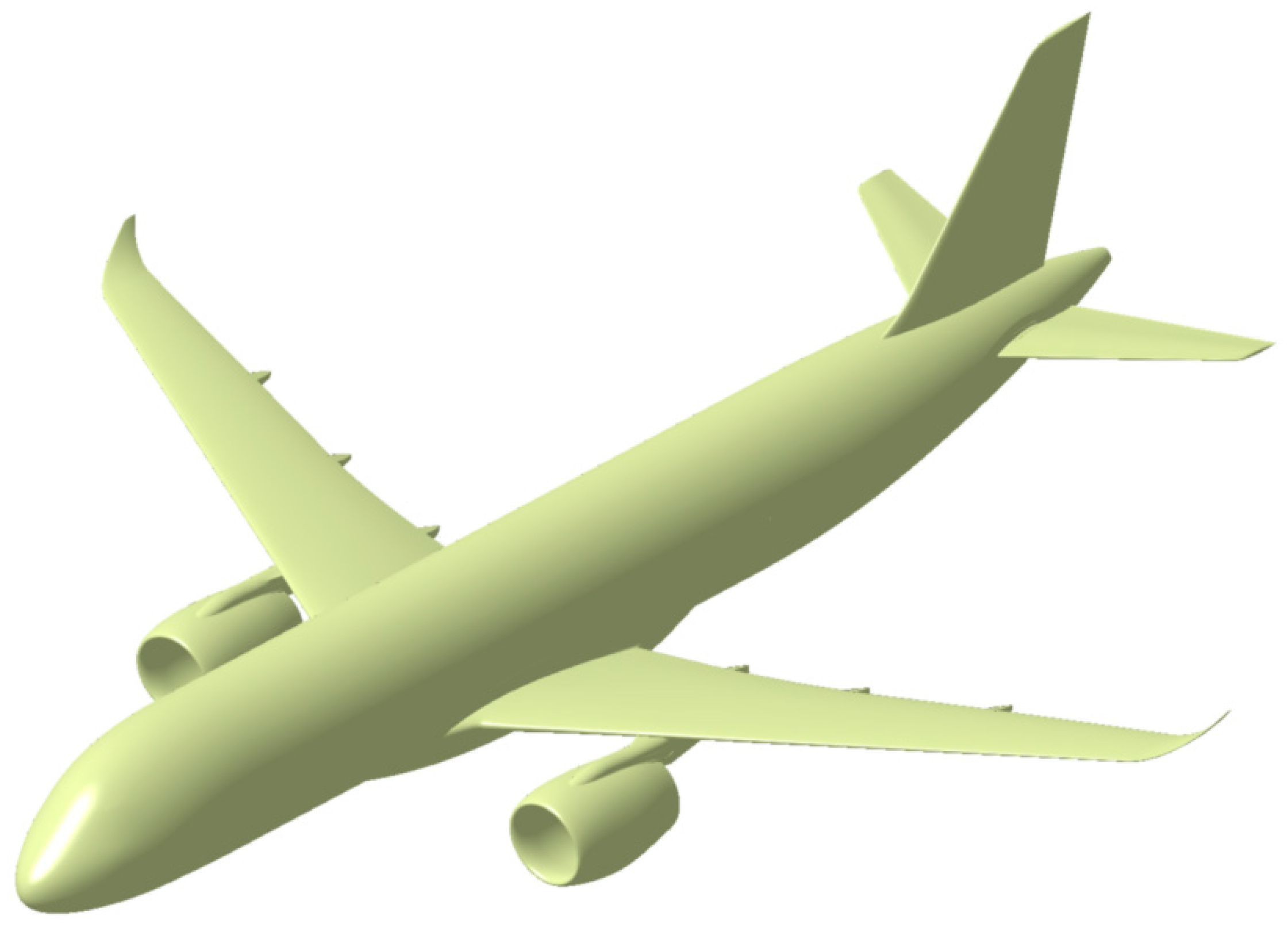

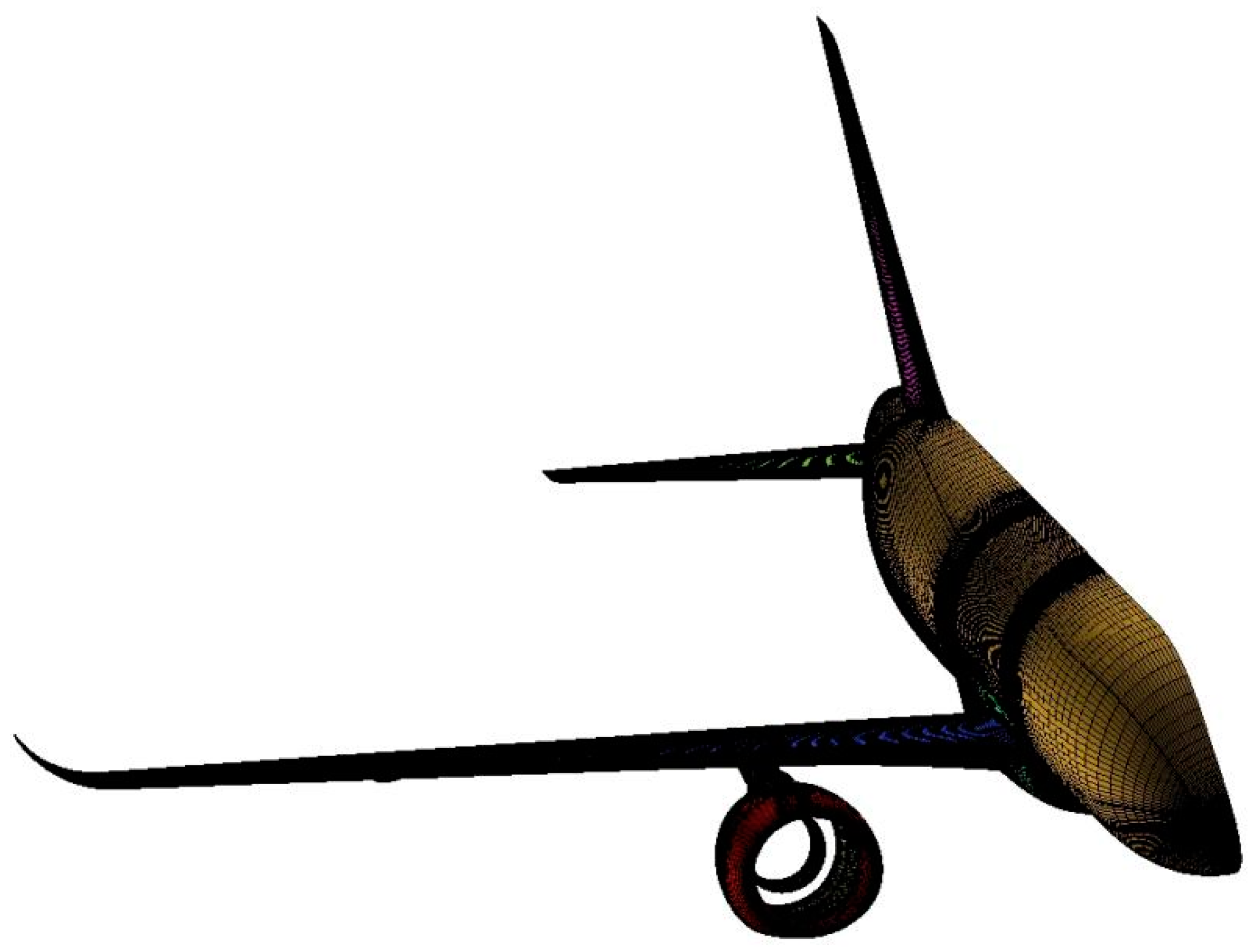
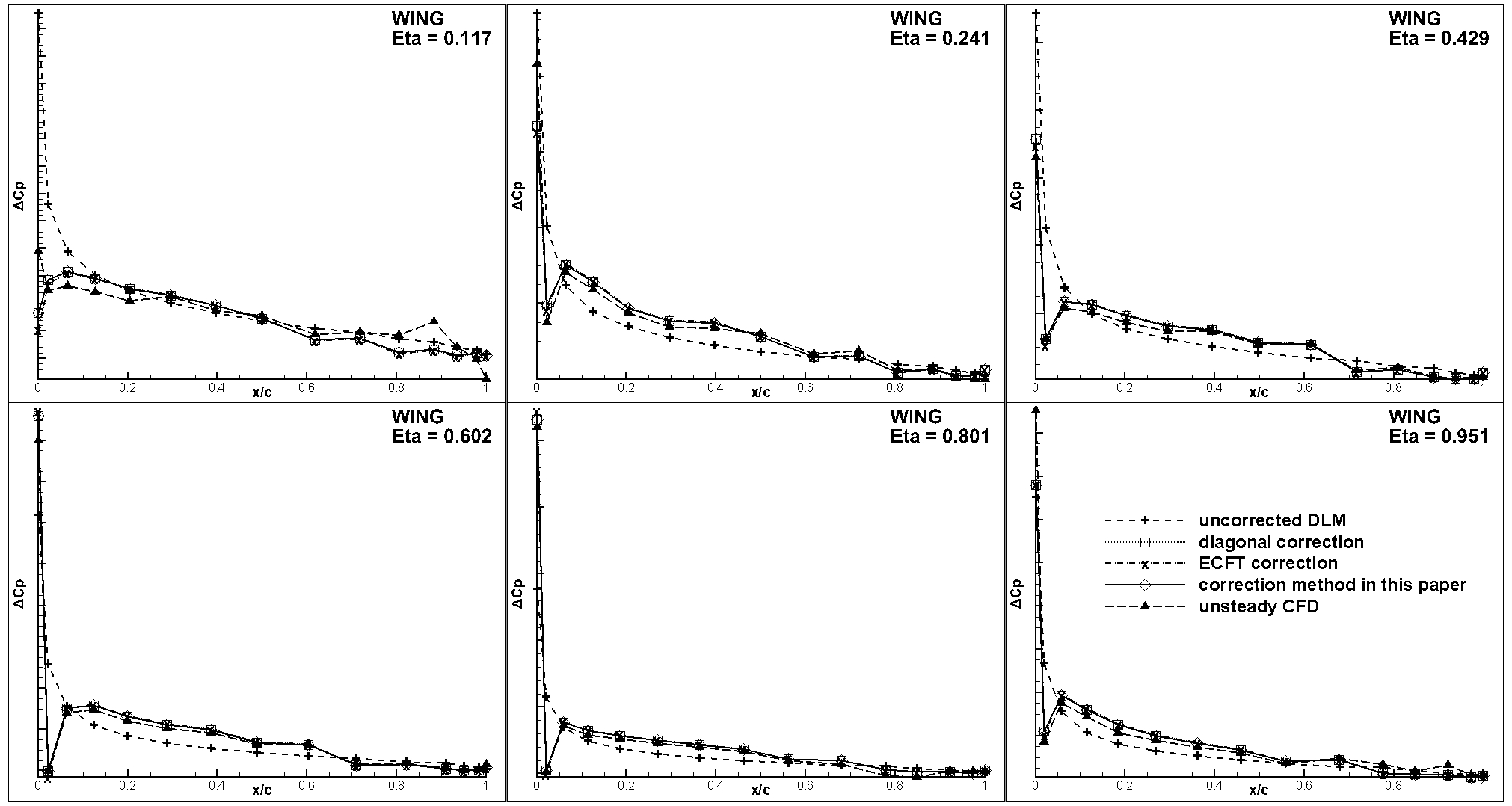

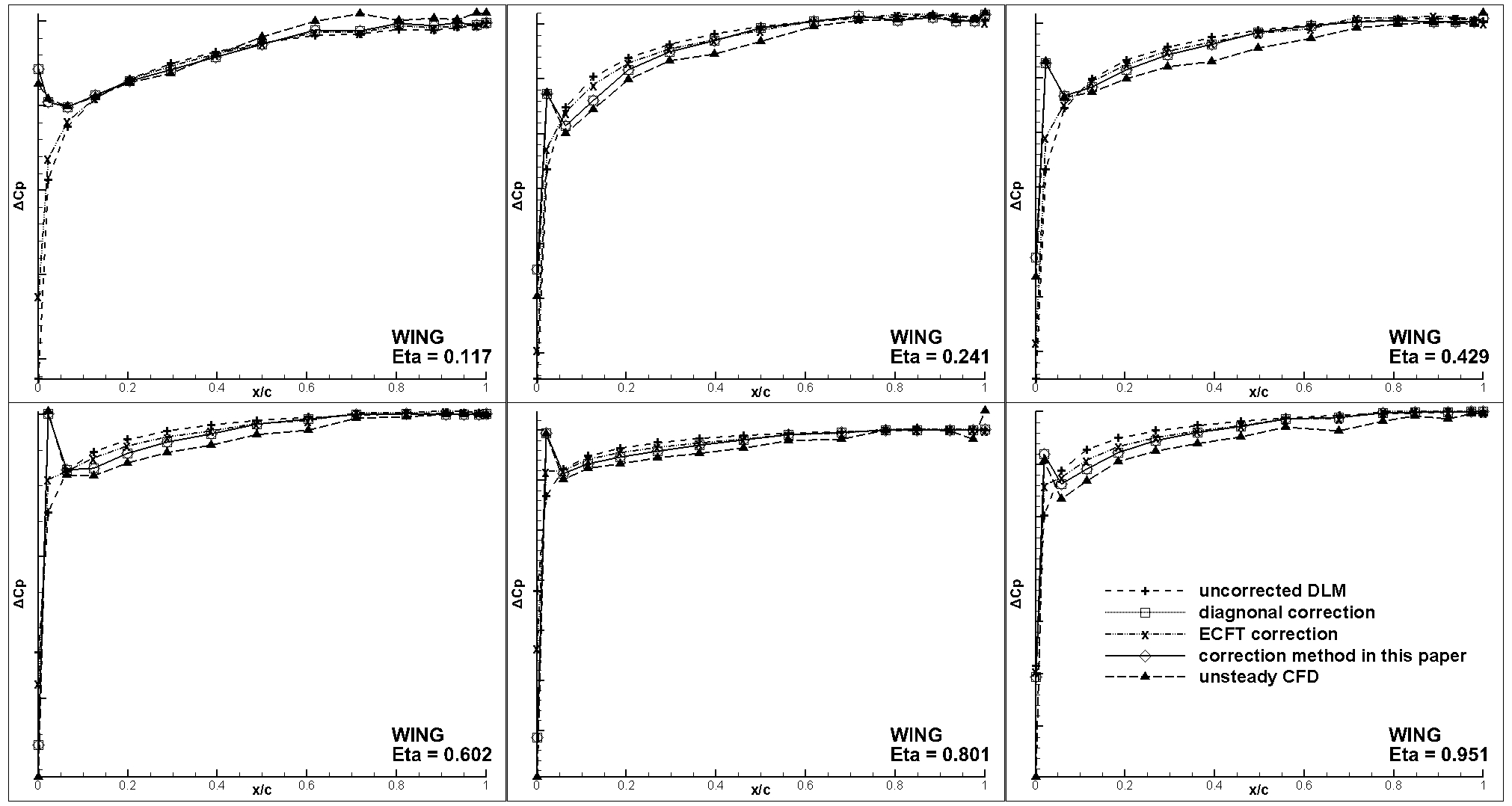
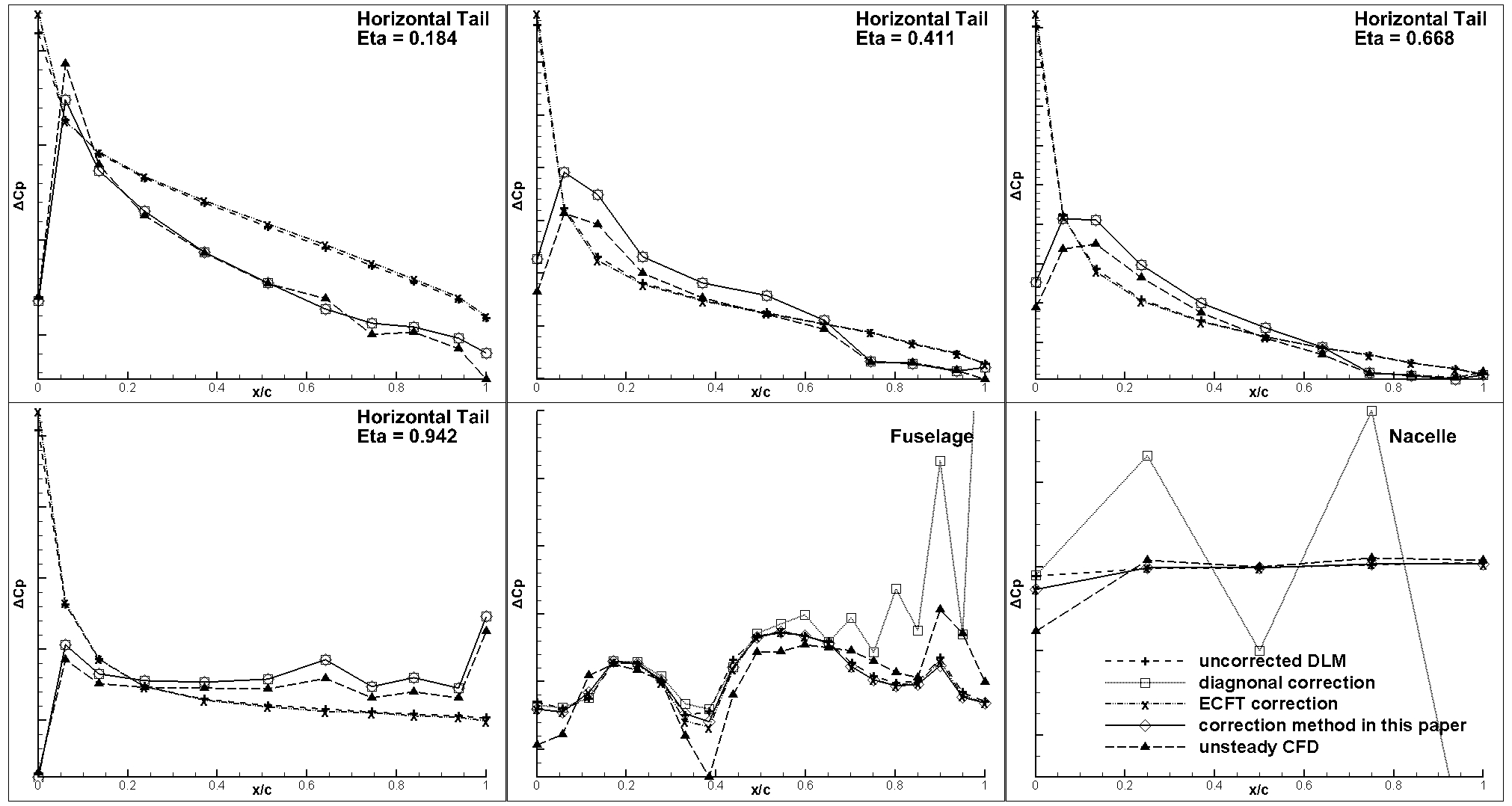
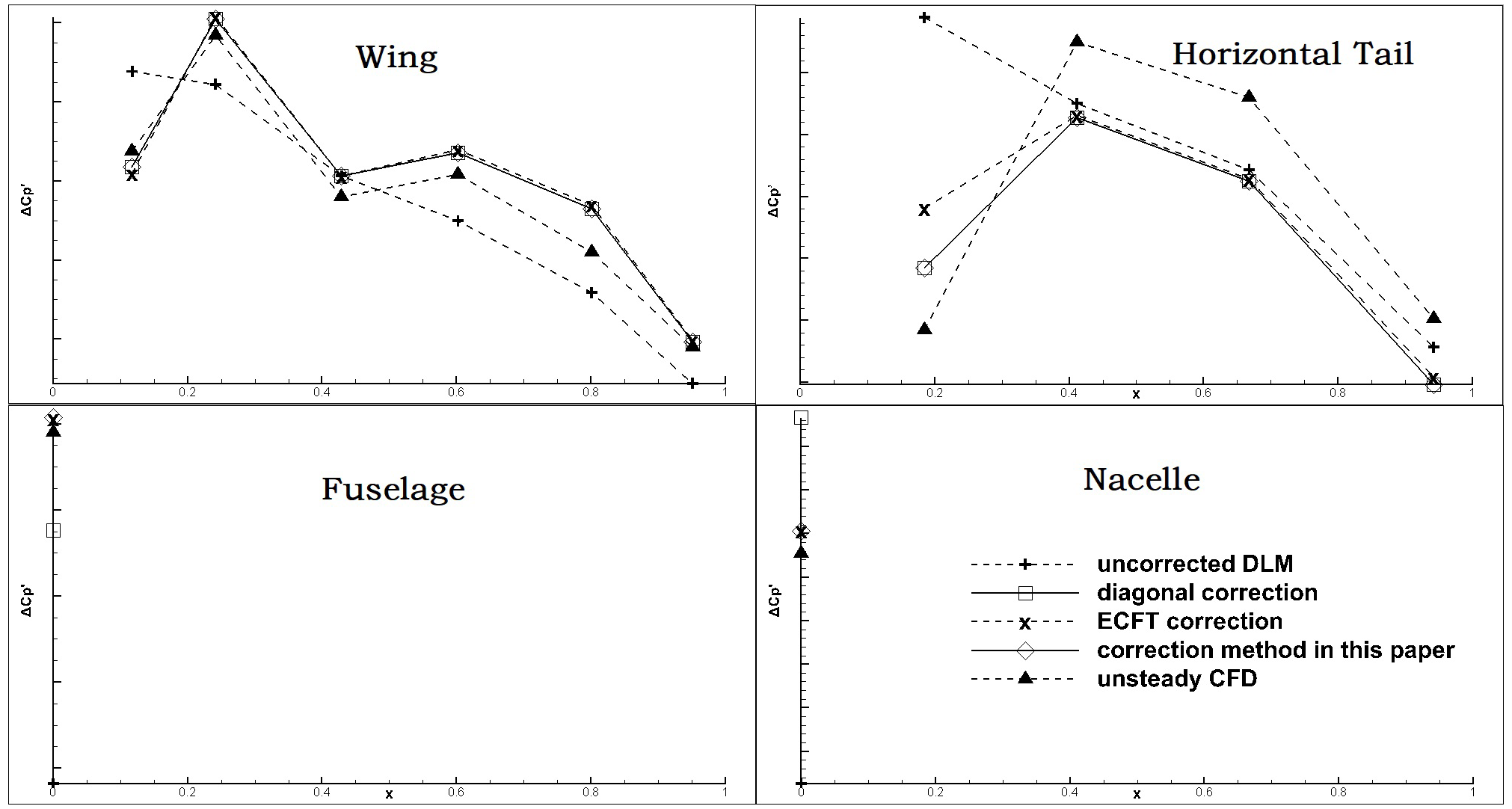
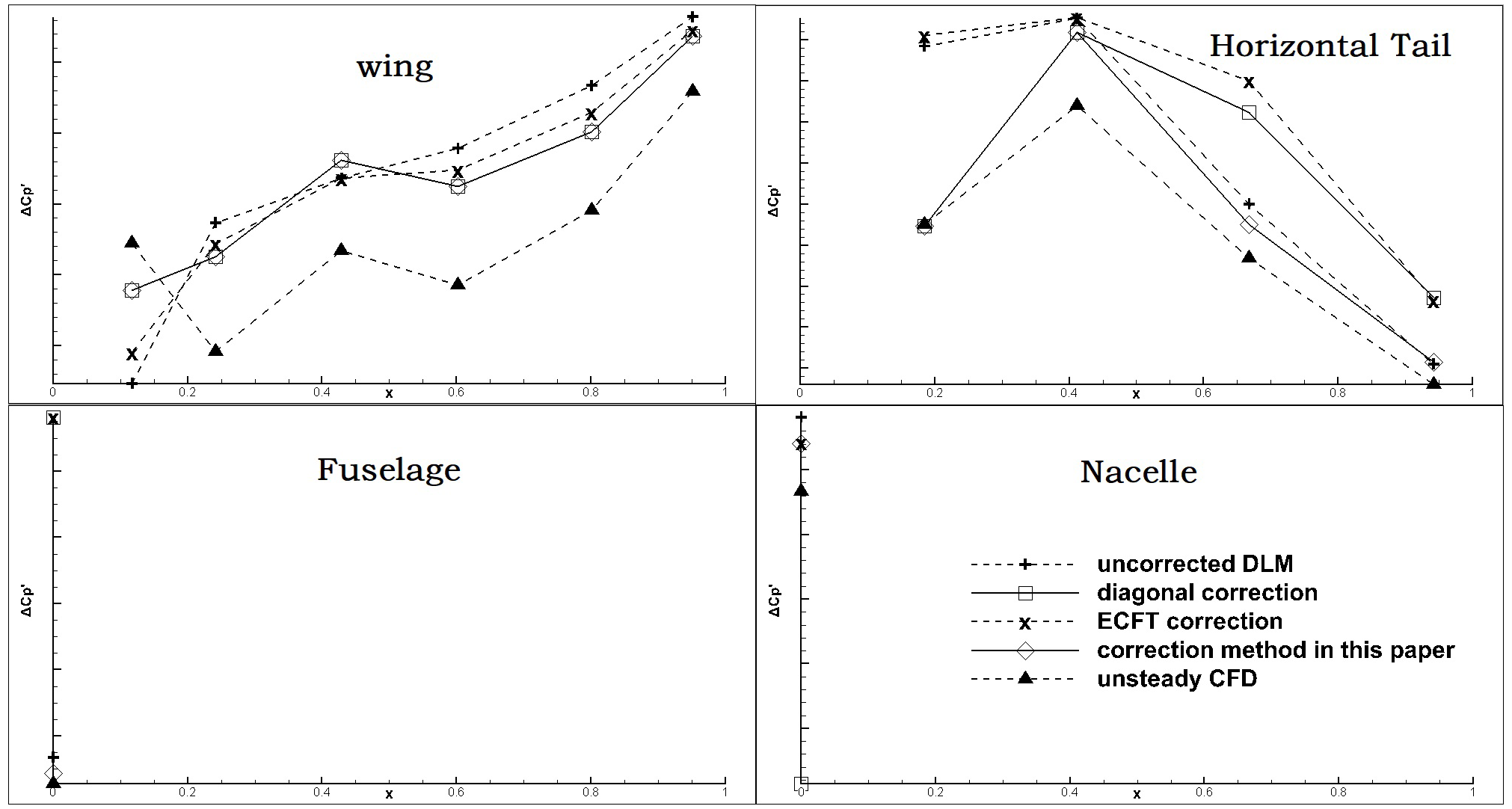
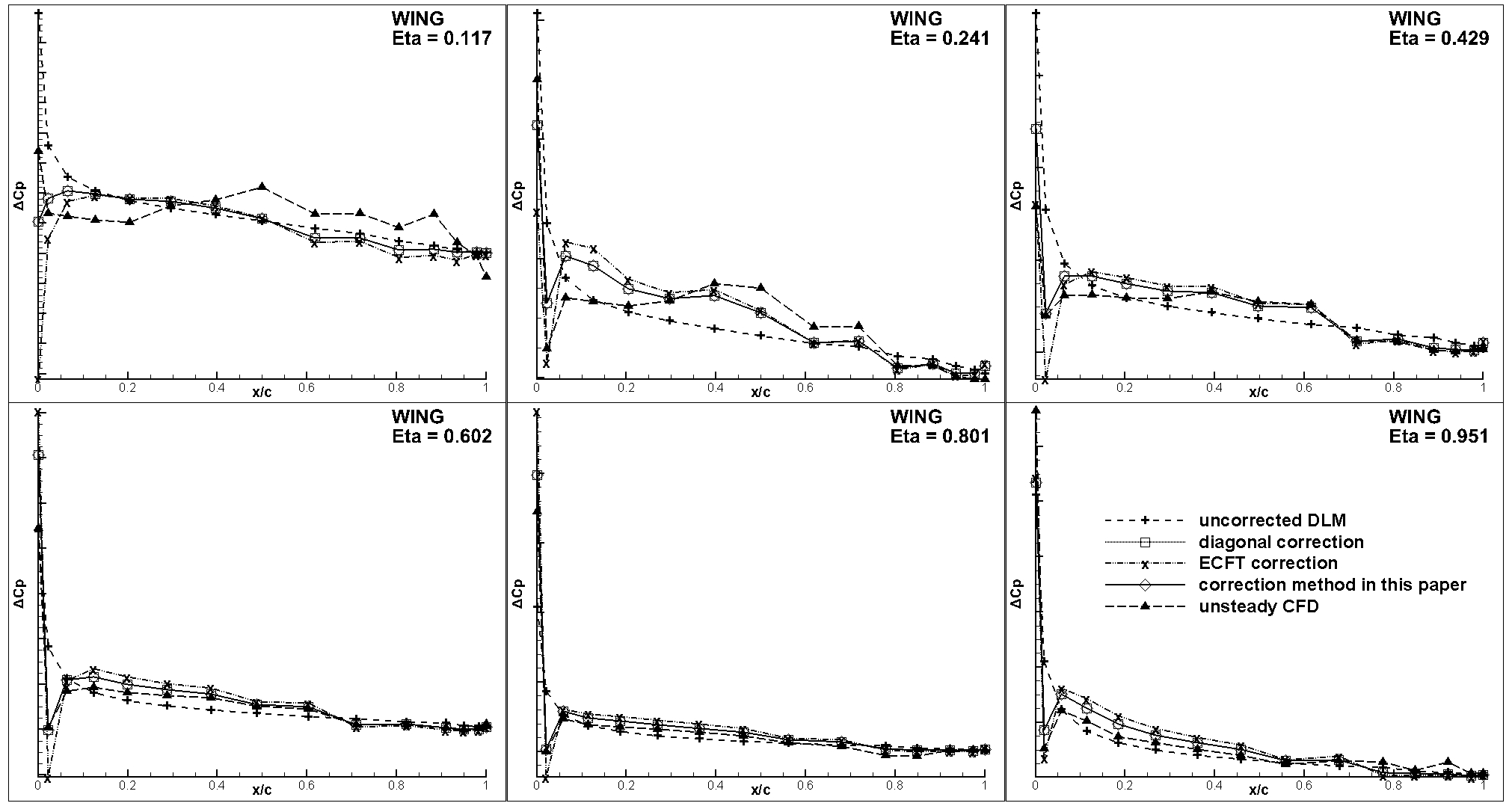
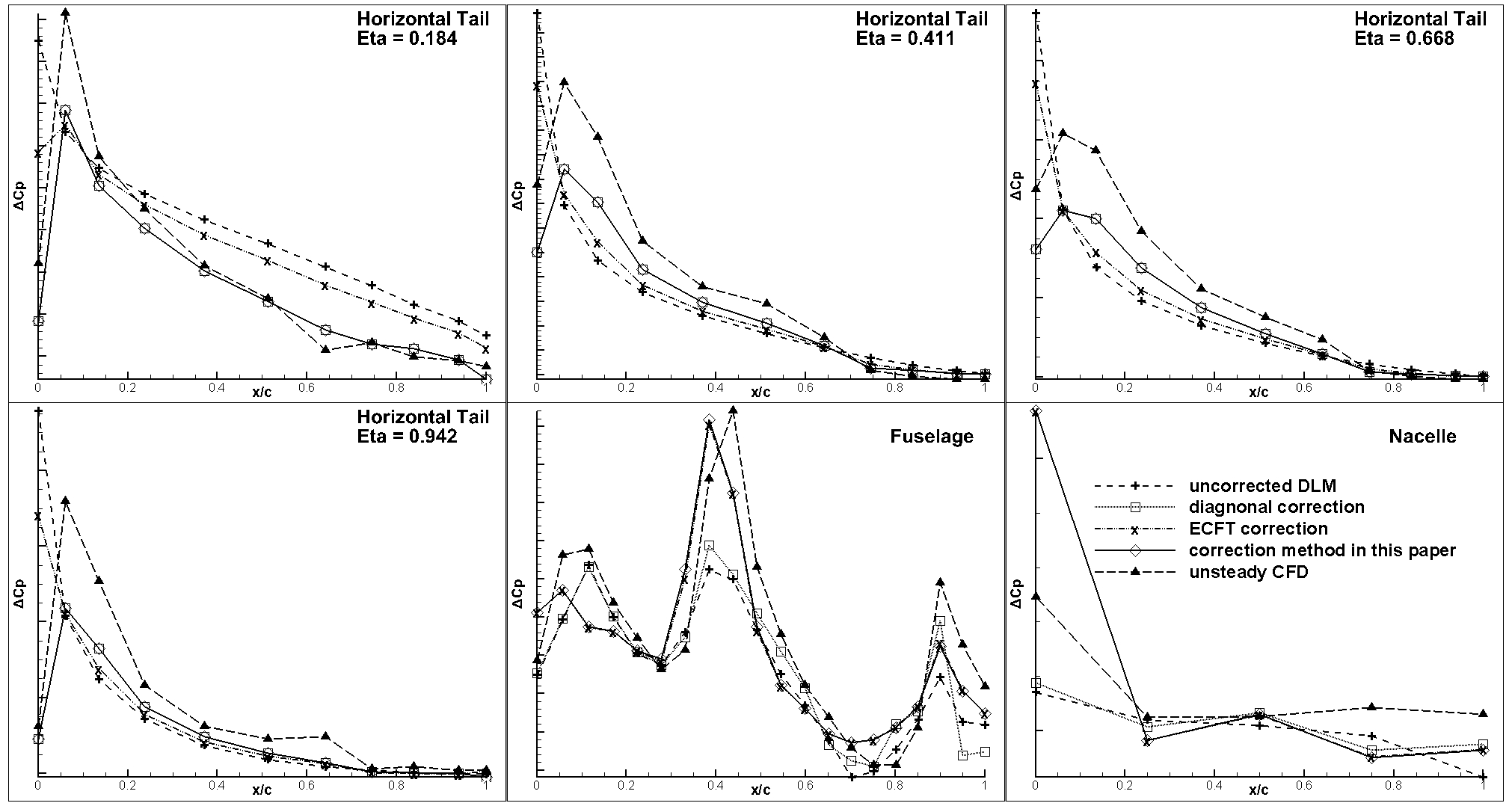

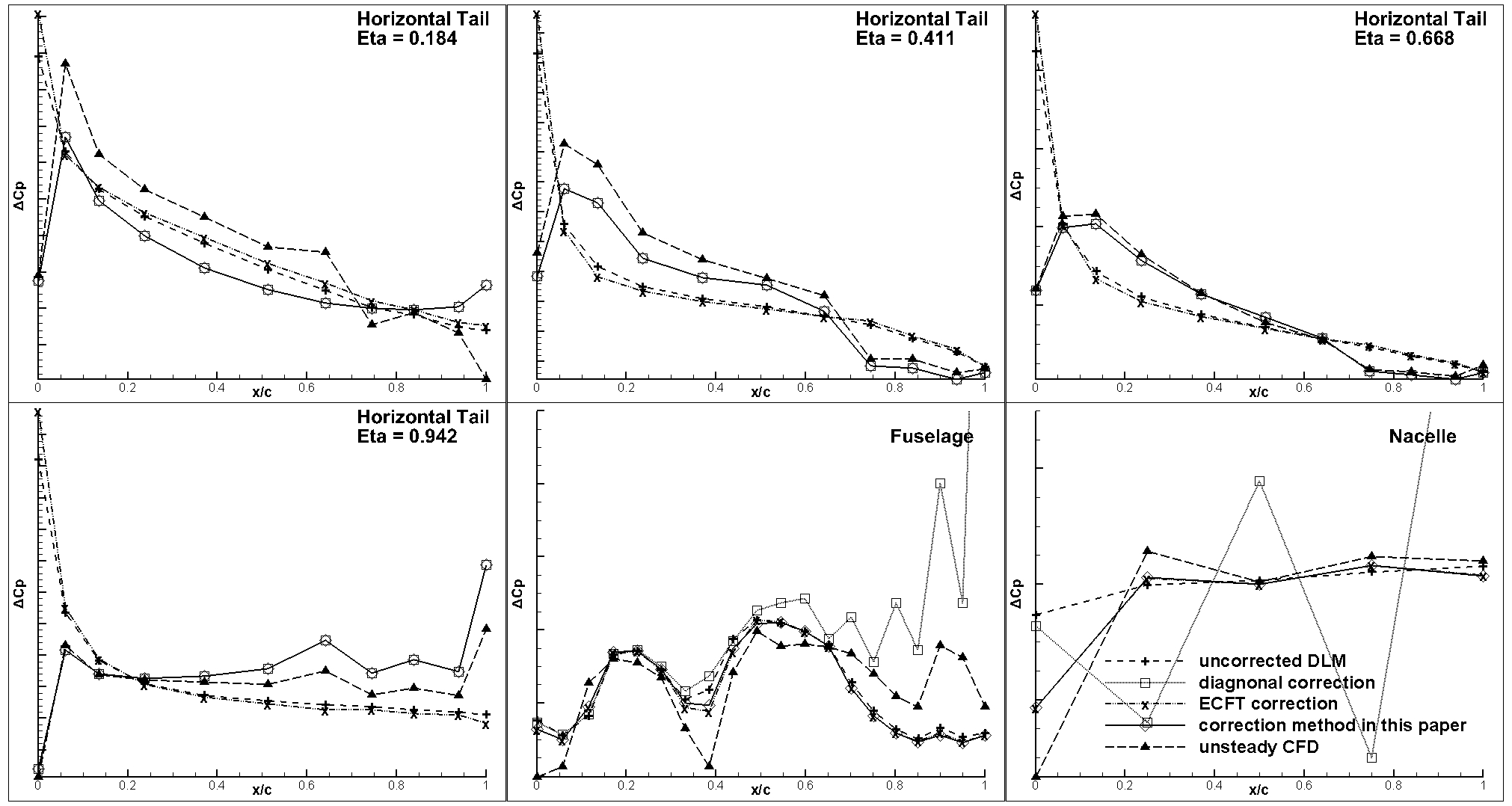
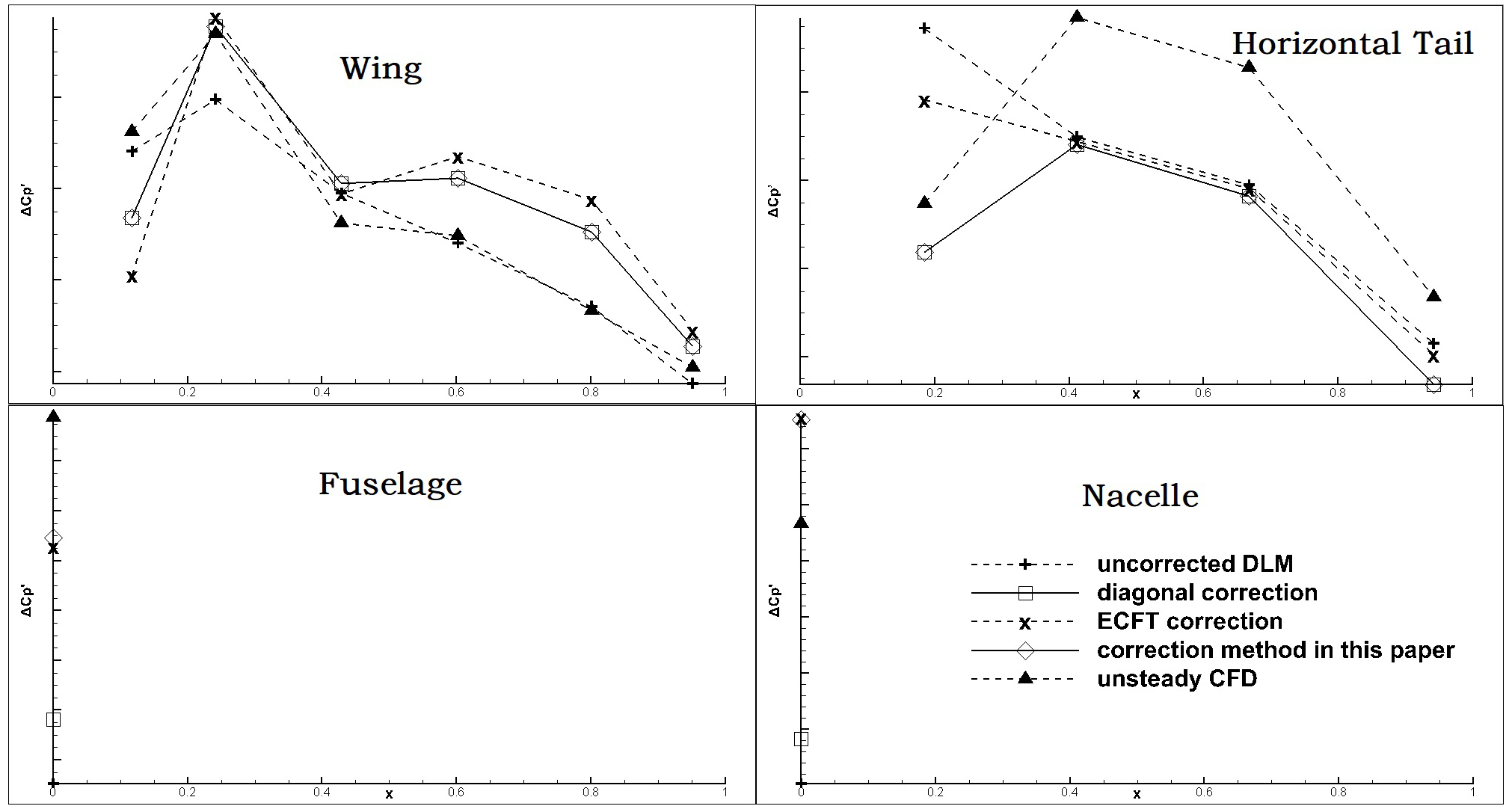
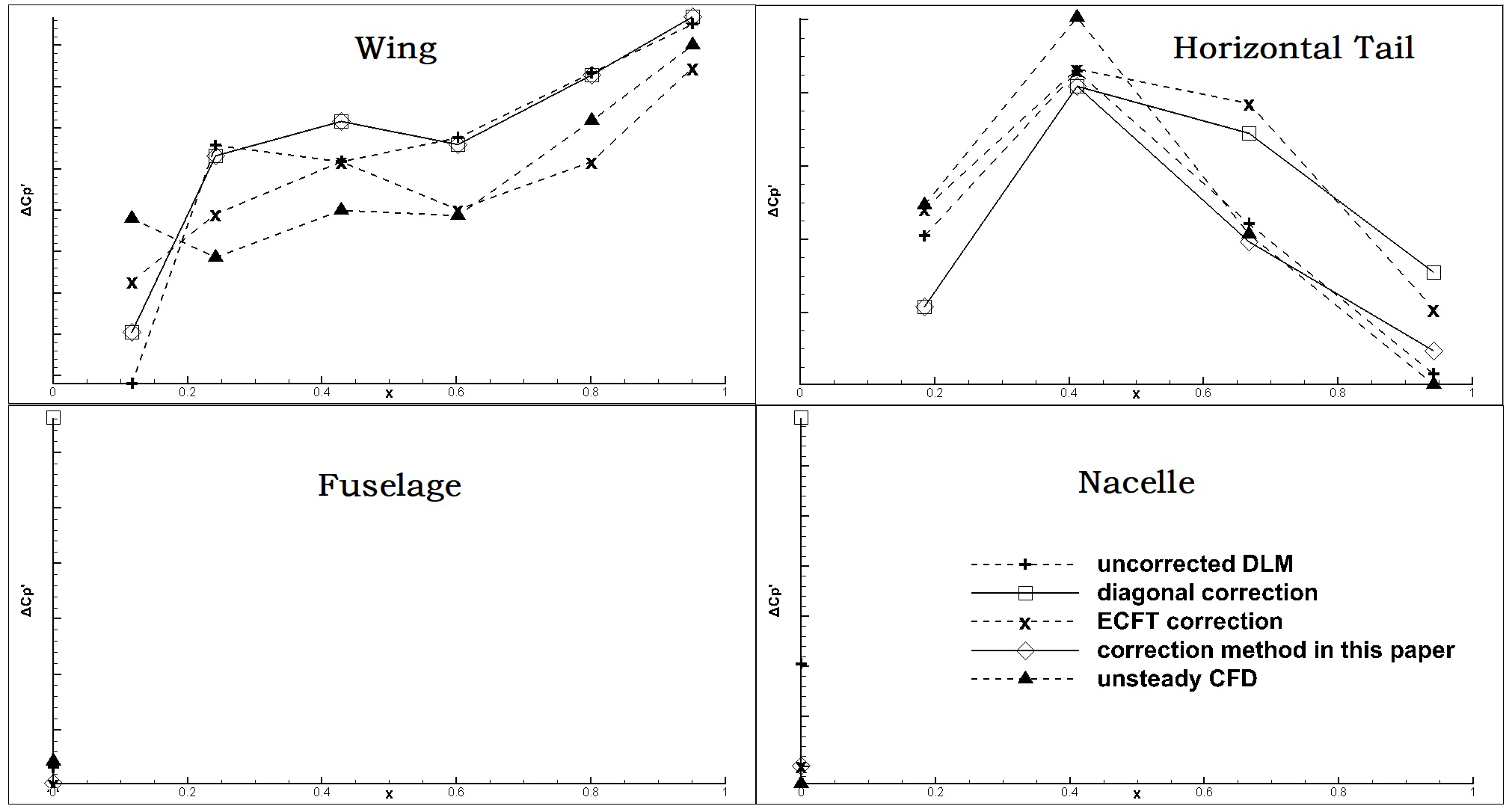
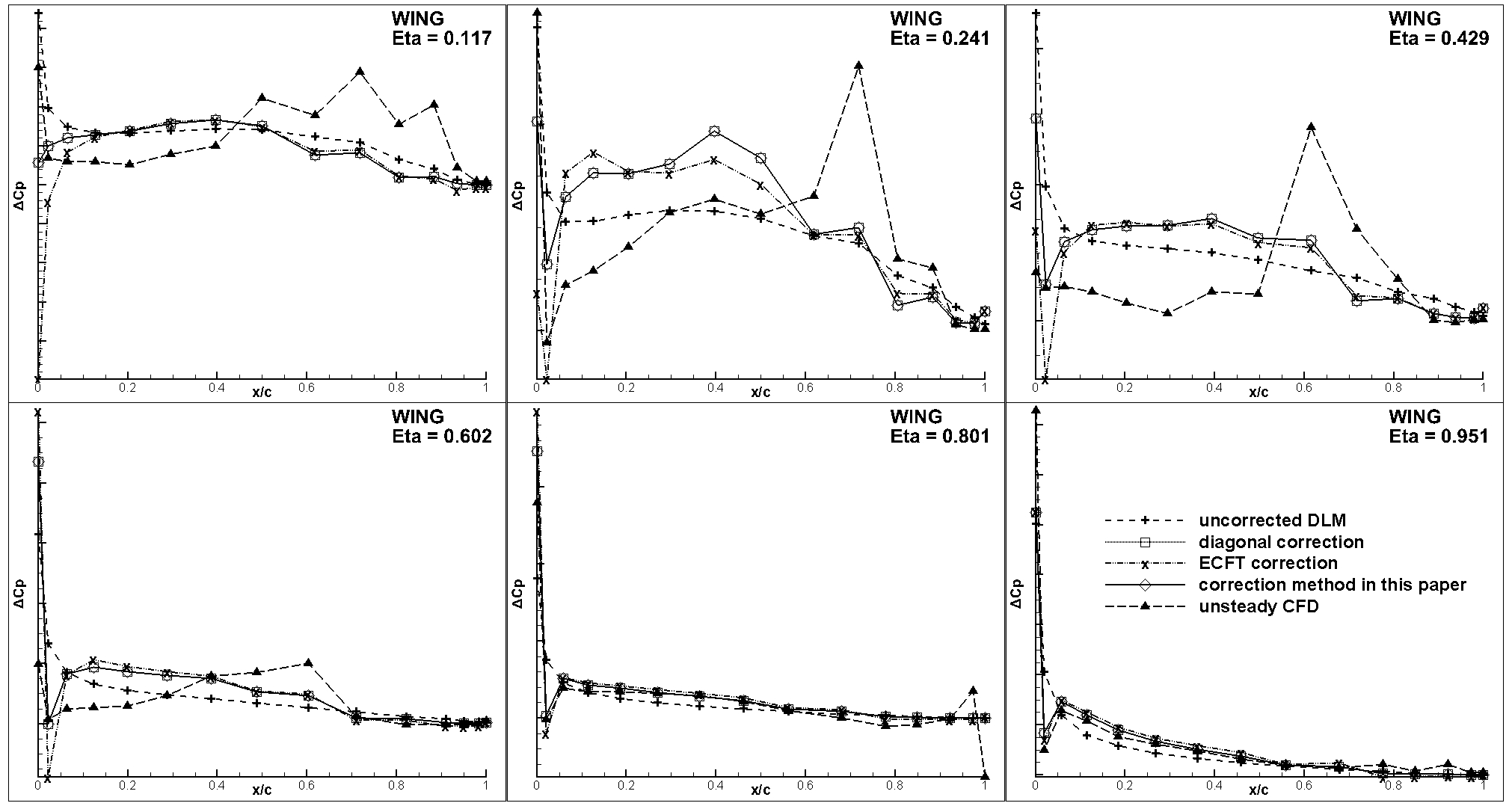
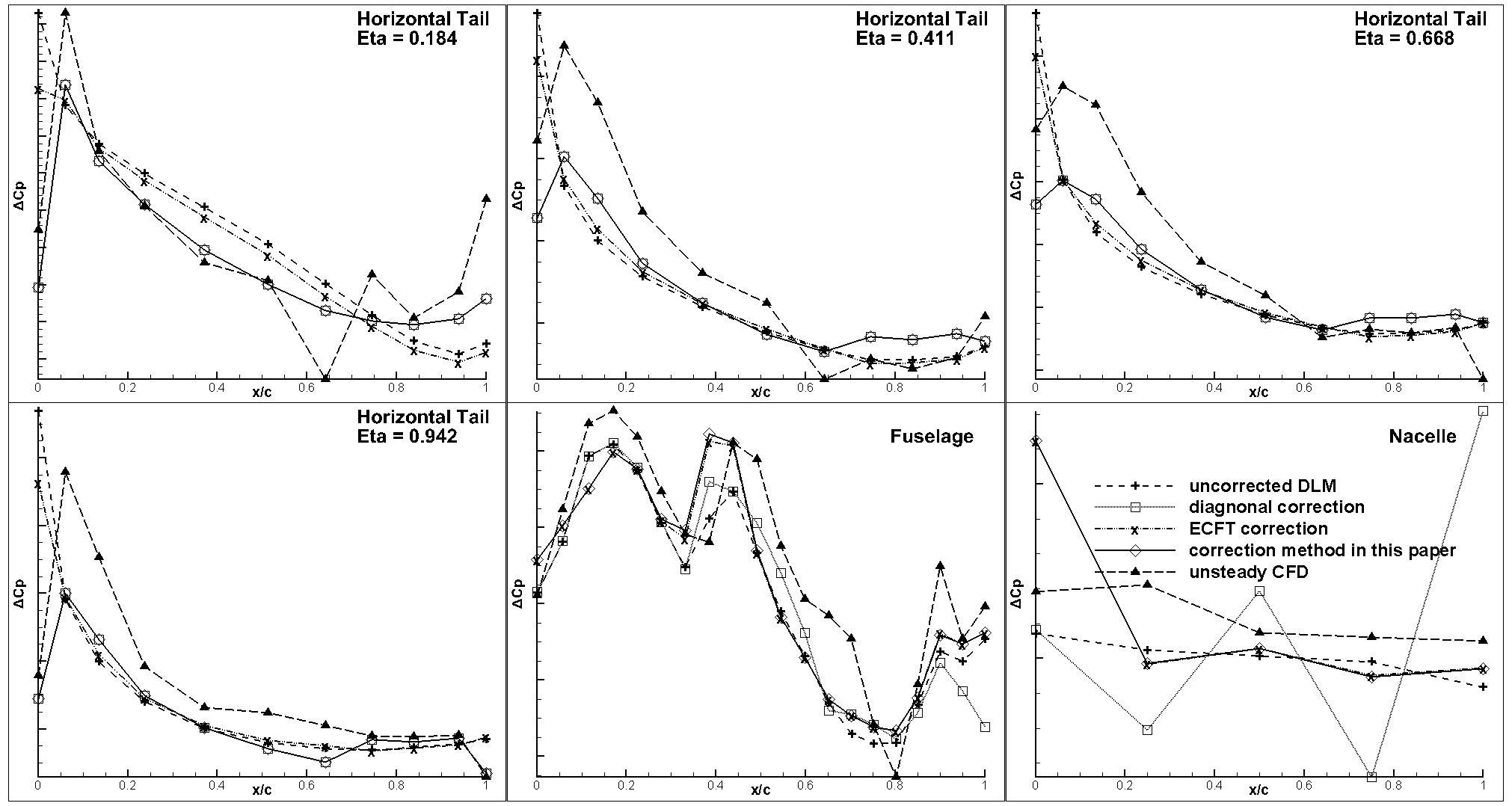

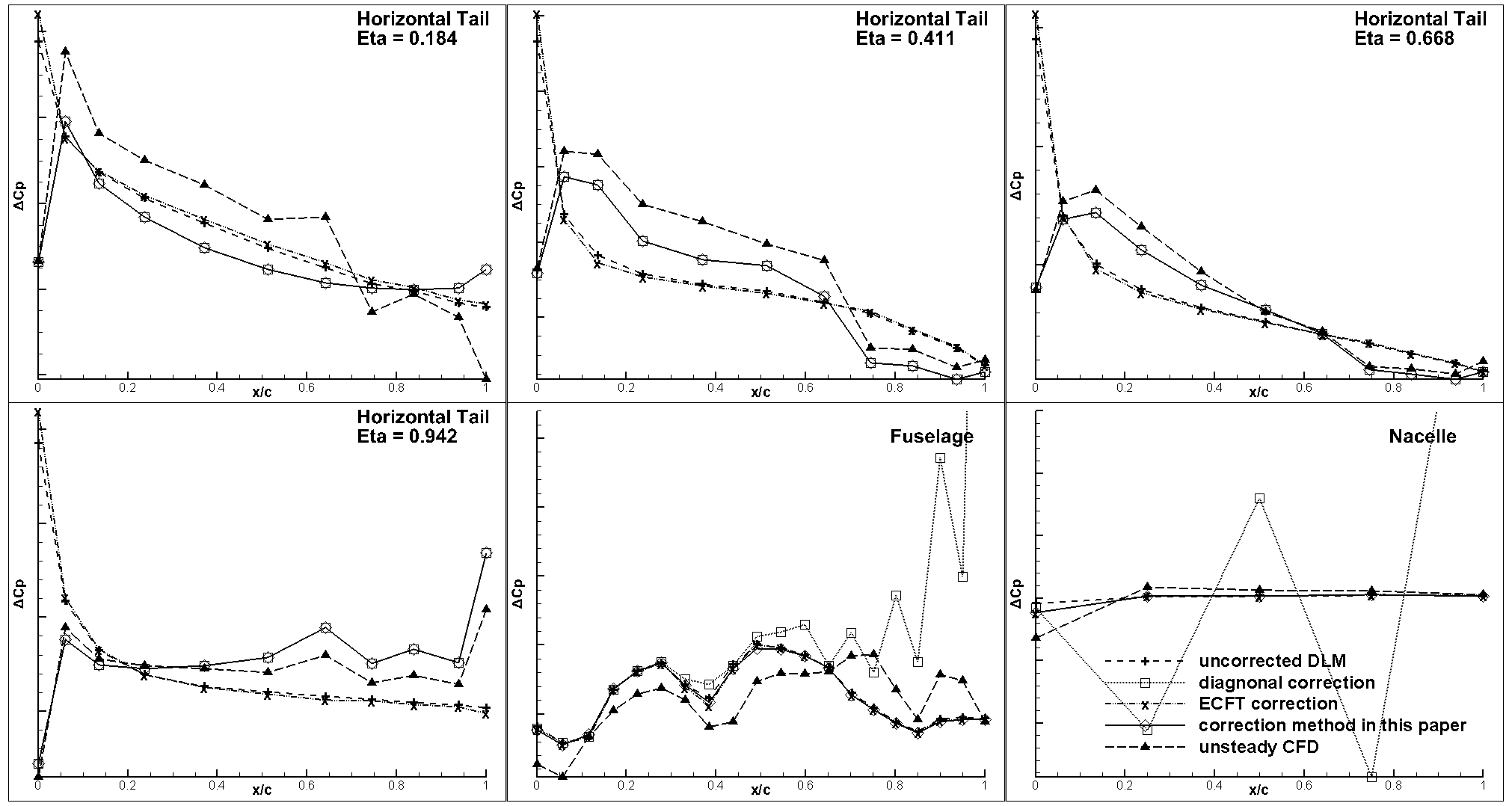
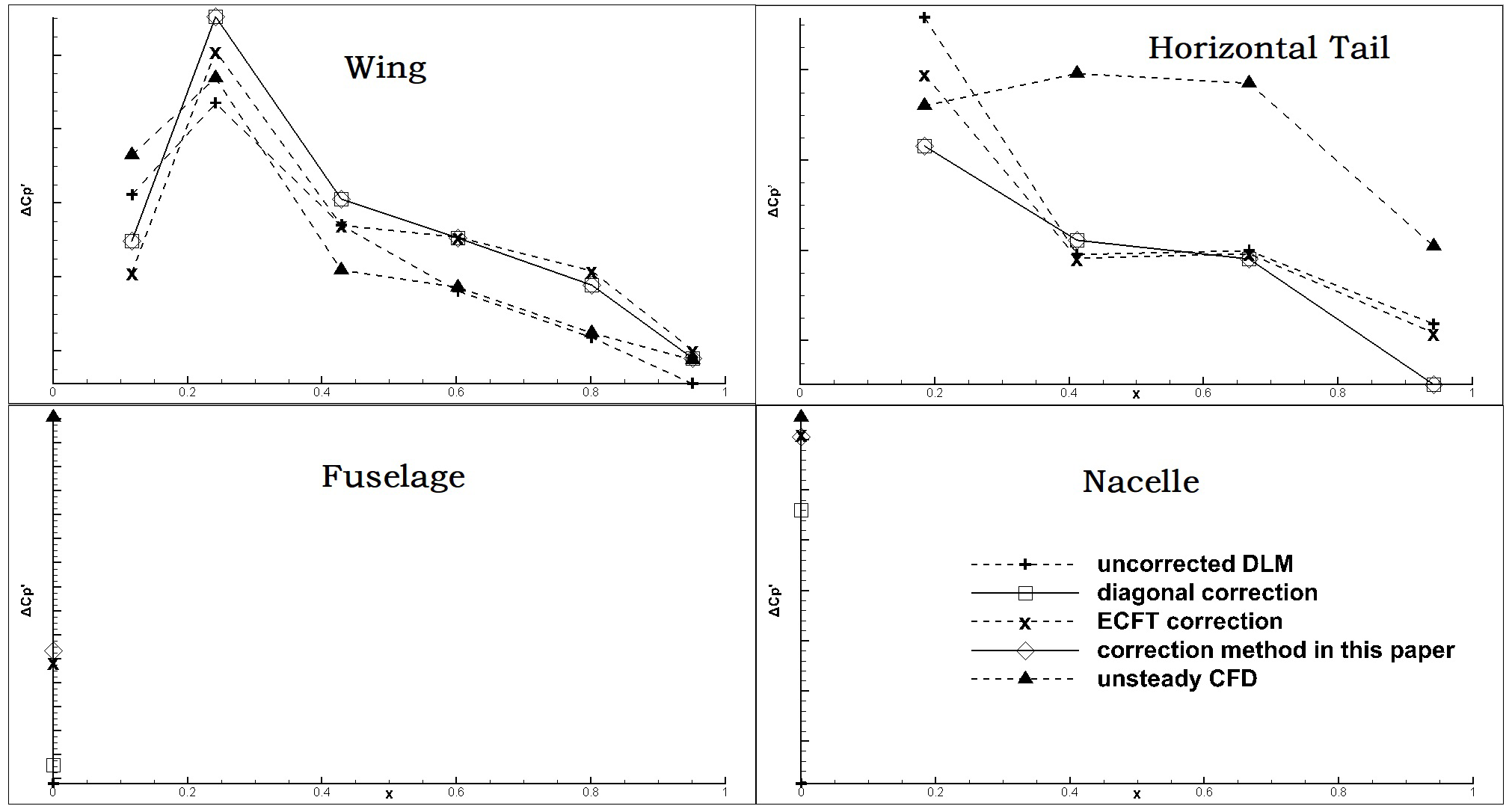

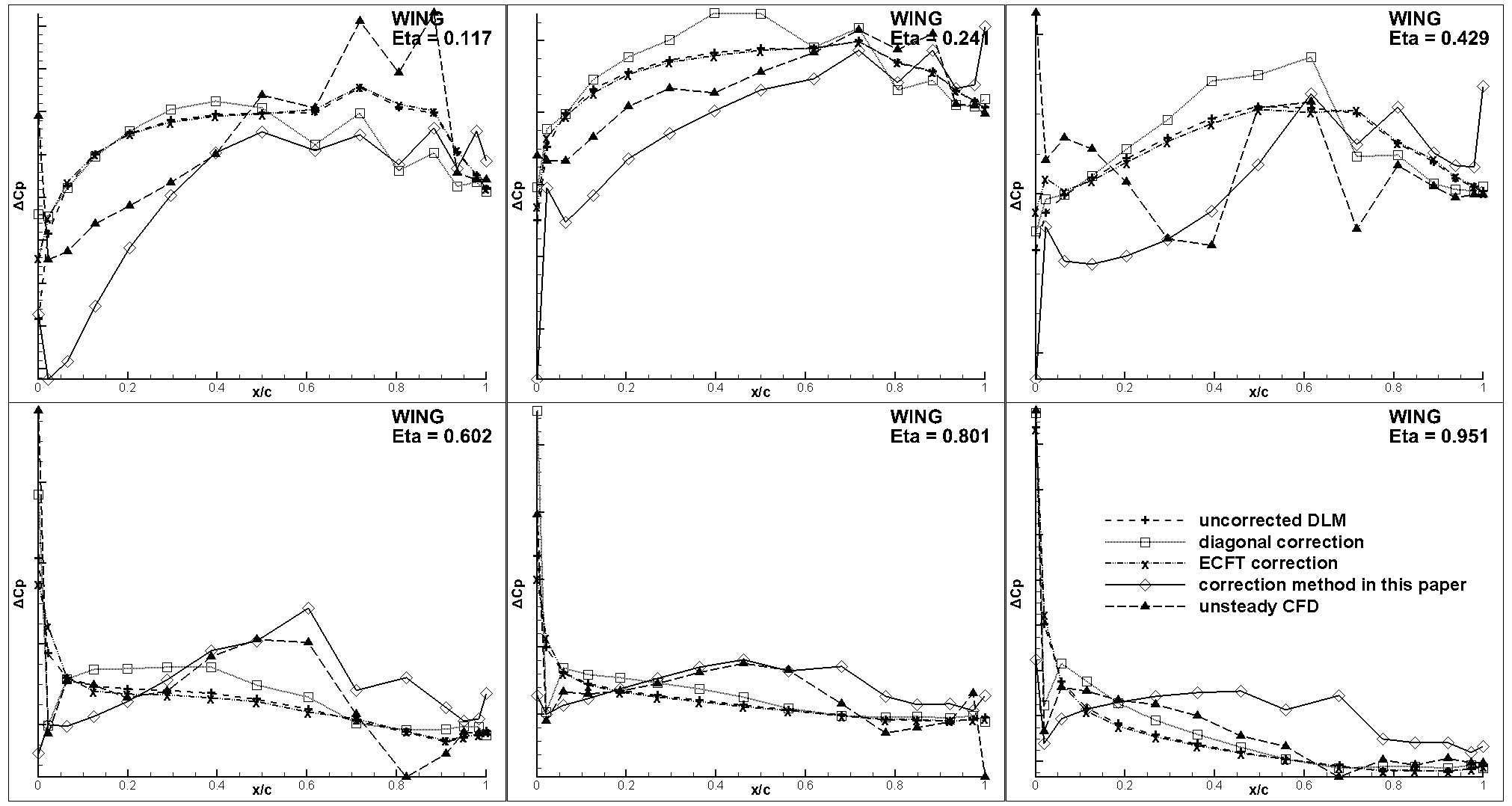




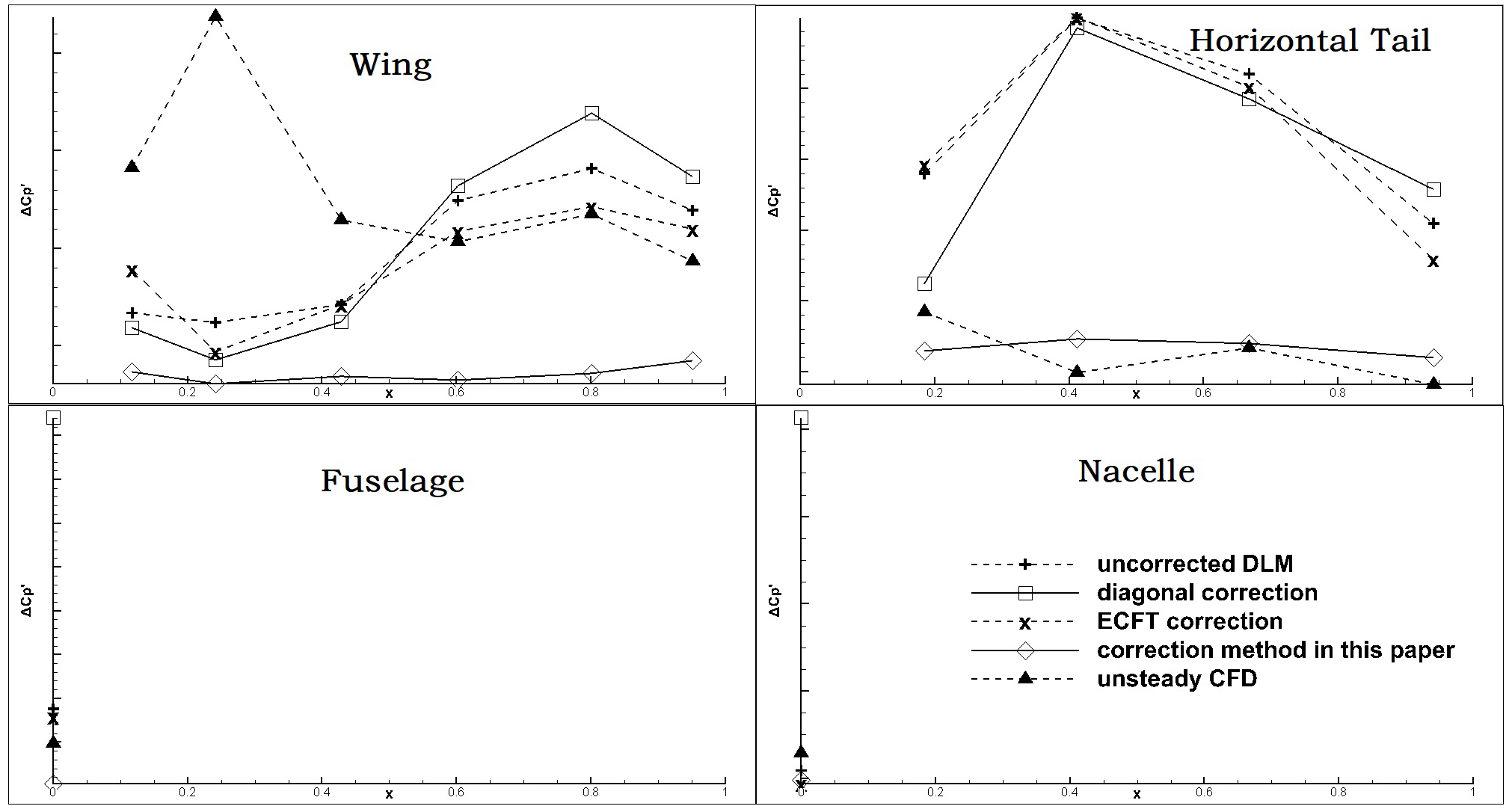
| Wing Span, m | Horizontal Tail Span, m | Fuselage Length, m | Height, m | |
|---|---|---|---|---|
| Simulation model | ≈35 | ≈13 | ≈39 | ≈12 |
| Name of Elements | Number |
|---|---|
| Total Elements | 1817 |
| Lifting Boxes | 1757 |
| Slender Elements | 30 |
| Interference Elements | 30 |
| Name of Parameters | Parameter |
|---|---|
| Total no. of points/[106] | 29.2 |
| Total no. of cells/[106] | 28.9 |
| First wall-normal layer spacing/[μm] | 10 |
| Expansion ratio | 1.2 |
| No. of wall-normal layers | 40 |
Disclaimer/Publisher’s Note: The statements, opinions and data contained in all publications are solely those of the individual author(s) and contributor(s) and not of MDPI and/or the editor(s). MDPI and/or the editor(s) disclaim responsibility for any injury to people or property resulting from any ideas, methods, instructions or products referred to in the content. |
© 2023 by the authors. Licensee MDPI, Basel, Switzerland. This article is an open access article distributed under the terms and conditions of the Creative Commons Attribution (CC BY) license (https://creativecommons.org/licenses/by/4.0/).
Share and Cite
Mao, K.; Jing, W.; Zhang, M.; Zhang, H. An Aerodynamic Correction Technique for the Unsteady Subsonic Wing–Body Interference Model. Aerospace 2023, 10, 837. https://doi.org/10.3390/aerospace10100837
Mao K, Jing W, Zhang M, Zhang H. An Aerodynamic Correction Technique for the Unsteady Subsonic Wing–Body Interference Model. Aerospace. 2023; 10(10):837. https://doi.org/10.3390/aerospace10100837
Chicago/Turabian StyleMao, Kun, Wuxing Jing, Meihong Zhang, and Huining Zhang. 2023. "An Aerodynamic Correction Technique for the Unsteady Subsonic Wing–Body Interference Model" Aerospace 10, no. 10: 837. https://doi.org/10.3390/aerospace10100837
APA StyleMao, K., Jing, W., Zhang, M., & Zhang, H. (2023). An Aerodynamic Correction Technique for the Unsteady Subsonic Wing–Body Interference Model. Aerospace, 10(10), 837. https://doi.org/10.3390/aerospace10100837






